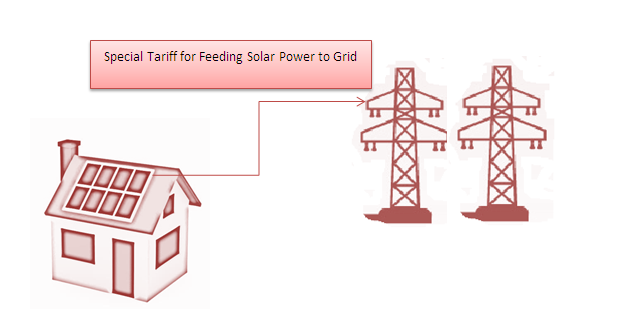Summary: Feed-in-tariff (FiT) is a special price paid by the electricity utility to power generators for the power the generators feed into the grid.
World over, governments offer Feed-in-tariffs to encourage businesses and house-owners to put up solar power plants. What is a feed-in-tariff, and how do they enable the growth of solar power?
A feed-in-tariff is provided to encourage people to put up renewable energy power plants – be these small power plants on their rooftops or large ground-mounted power plants. The FiT prices are usually much higher than what a typical power generator (say from a conventional thermal power plant) will get for supplying power to the grid.
The Feed in Tariff prices, used typically as incentives for renewable power generation, are typically much higher than what a conventional power generator (coal, gas..) will get for supplying power to the grid.
The FiT is used as a financial incentive to encourage investment in renewable power, so that renewable energy can scale to much larger sizes faster.
Questions from the curious cat
Why are feed in tariffs required?
FiTs are required because solar power in specific and renewable power in general is not yet cost competitive with traditional power generated from fossil fuels. Once renewable power systems achieve scale, their costs could be much lower and could compete against conventional power costs. However, in order for renewable power to achieve scale, incentives are required. FiTs, in the form of higher than usual prices for supplying power to grid, are one such incentive.

What is solar grid parity and what is its relation to feed in tariff?
Solar Grid parity refers to the situation when the cost of generating power from solar is the same as or lower than power generated from conventional sources. Feed in tariffs are not required once grid parity is reached for solar, as those generating solar power can now supply to end users on their own, as they now have a “product” at a competitive price.
How do governments get the extra money they pay to the solar developers through the feed in tariff?
This is a good question, but unfortunately not a question that ordinary souls like us can answer. If they are professional about it, governments should explore sensible ways in which such feed in tariffs can be sustained over a period of time. One such way could be to increase the price of electricity paid by end users so that they can use the higher revenues they get from end users to fund the FiTs.
There are other sustainable avenues as well that are just commonsense. But then, we do not anymore consider governments to have any sense, leave alone common sense, do we?
Contribute to Suncyclopedia – We wish to make Suncyclopedia a compendium of high quality content and insights, and are keen to add inputs from solar experts worldwide. If you wish to share any fact or insight about this topic, do send it to feedback@suncyclopedia.com ; if we find it useful, we will surely add it here and make sure we give you credits for it too! Look forward to hearing from you – Team Suncyclopedia



